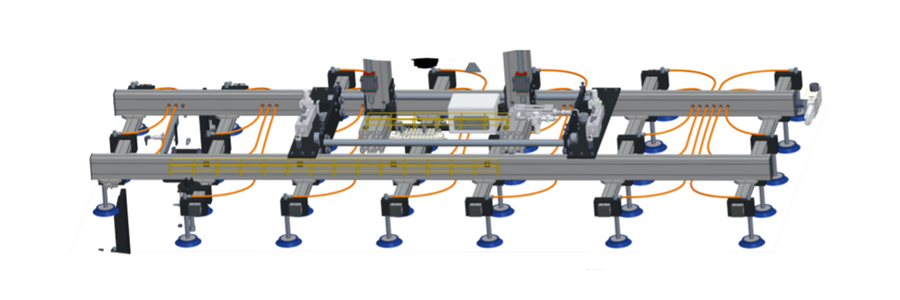Own development model for Integrated Management of Technological Innovation.
New automated cutting and panelling line for the forming of sheet metal components

The aim of the project is to develop a new fully automated and self-sufficient cutting and panelling line for the forming of non-serial sheet metal components. This requires the development of a set of technologies that provides an automated solution following criteria in terms of optimisation of material and production resources, including:
• Dimensioning of installations by means of Discrete Event Simulation (DES) to define resource management strategies and maximise full use.
• Development of working strategies for each machine using DES to obtain maximum performance of the whole line. Discretisation of processes of each machine and integrate them on the complete line to improve the global performance against the particular performance of each machine.
• Integral management system capable of organising manufacturing orders, materials (raw, semi-finished, finished), CNC programs and required cutting and bending tools.
• Flexible storage systems capable of responding quickly to demands for raw materials and semi-finished products in an organised and controlled manner.
• Intelligent management model and transport for a correct management and handling of semi-finished components.
• Traceability and identification systems of semi-finished products to ensure control of location and position of all semi-finished and finished products, ensuring the correct processing of each operation of the entire automated line.
• To generate the models of the production system by means of DES tools for dimensioning according to different productive requirements.
• To integrate optimisation rules for sequencing of schedules in the DES model according to different requirements (cost, time, opportunity cost, material utilisation).
• To establish the concepts of the new maintenance system.
• To develop high and low-level layers of communication for information transfer and system control. To develop a data persistence layer for the subsequent development of modules.
• Dimensioning of an automated cutting and panelling line using DES simulation tools.
• Definition of manufacturing strategies based on DES simulation.
• Definition of multi-objective optimisation rules for sizing of production requirements.
• General layout of maintenance systems.
• Detailed development of certain elements of the new handling system.
• Development of communication layers and system-wide data persistence.